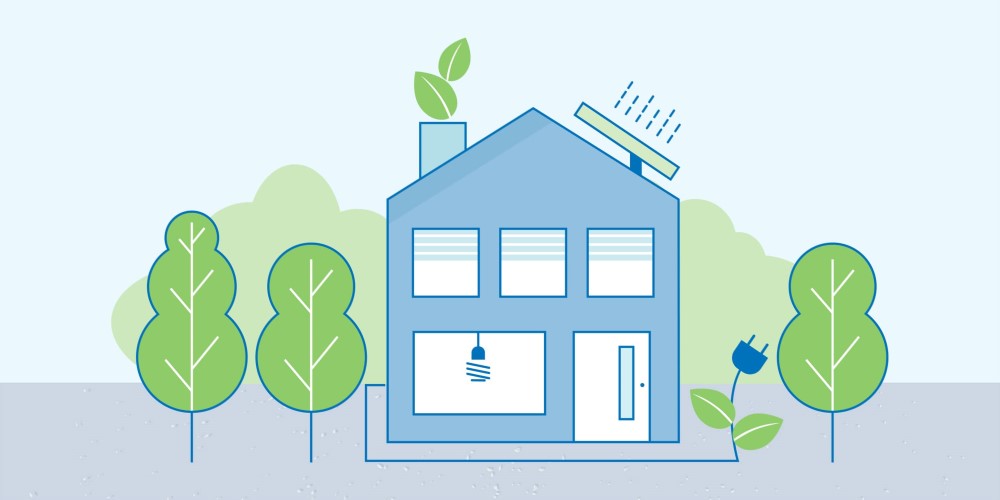The spring/summer season is a great time to make improvements to your home, both big and small. Your project list likely depends on whether your home is new — maybe you’re looking to finish areas like a backyard or basement — or whether it’s older with rooms needing full renovations.
A consideration that might not be top of mind when planning these projects is the environment. We do our best to make eco-friendly choices in our daily lives but that may not always apply when it comes to upgrades around our homes. Cost is usually the reason. But even though an eco-friendly upgrade might cost more upfront, there’s a high chance by implementing them you’ll actually save money in the long run.
Here are some eco home improvements worth investing in.
Low cost eco improvements
If you’re not ready to make a big investment, look at spending to make small changes to cut back on the amount of resources (i.e. electricity, water, etc.) that get wasted in your home.
To reduce your home’s resource waste:
- Switch to smart thermostats to program temperature settings for when you’re home, at work or asleep
- Install low-flow or dual flush toilets to lower the amount of water per use
- Consider low maintenance landscaping to lessen the need for frequent watering
These small investments can add up and decrease the amount of your monthly utility bills, saving you money annually.
Mid-high cost eco improvements
If you’d like to level-up your eco-friendly upgrades and increase (potentially significantly) your return on investment, look at opportunities to increase the overall energy efficiency of your home.
To increase your home’s energy efficiency:
- Replace existing light bulbs with LED bulbs to decrease energy usage and frequency of replacement
- Add skylights to rooms without windows (i.e. bathrooms) to reduce use of artificial light
- Purchase a new furnace or water heater with higher efficiency ratings
- Go “off the grid” by installing solar panels and become energy self-sufficient
Upgrading the efficiency of your home will reduce your energy consumption, potentially drastically, and will add up to even bigger savings on your utility bills. Or in the case of going solar — eliminate some of them entirely.
Tips for investing in eco home improvements
- Do your research. Understand what eco-friendly upgrades are available and consider which ones fit your lifestyle. When planning any significant home improvements, it’s best to consult a professional for their expert opinion. They can accurately explain what’s possible, how much it will cost and how much it can potentially save you over time.
- Prioritize your savings. If you have savings set aside already that you can use to fund your improvements — great! But if you don’t, or if you need a bit more, set a “home fund” goal using Servus’s digital goal tool and start automatically putting money aside to reach it.
- Look into borrowing options. If the need for these home improvements is more immediate, consider applying for a personal loan, such as a Servus renovation loan. This offers access to funds up front, and you can set a repayment schedule that works within your budget. If you have a mortgage you could also fund improvements via a Home Equity Line of Credit (HELOC), which offers revolving credit that you can borrow against and pay down whenever you need.
- Apply for government rebates. Once you make the investment, take advantage of eligible governments grants and incentives to recoup some of your expense. Check out the Government of Canada’s Directory of Energy Efficient Programs for Homes to see what’s available. You can also check your local municipal or regional government for additional rebates you may be eligible for.
If you’re planning home improvements, talk to a Servus advisor to find out how making an eco-friendly investment can help you feel good about both your finances and the environment.



